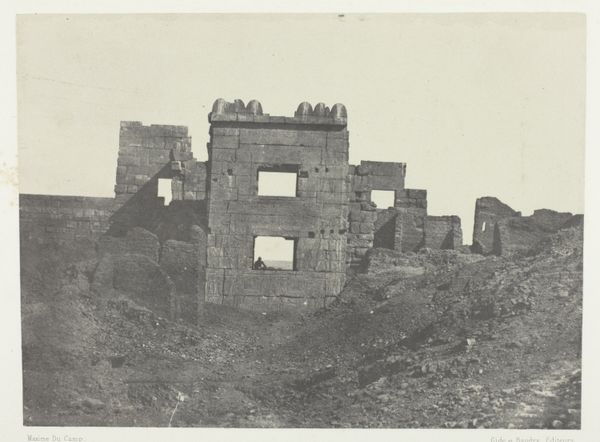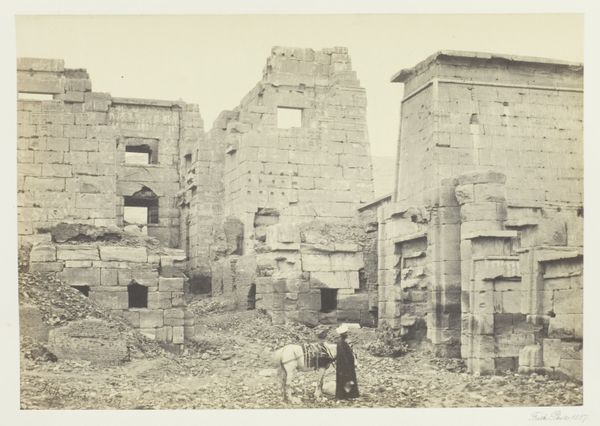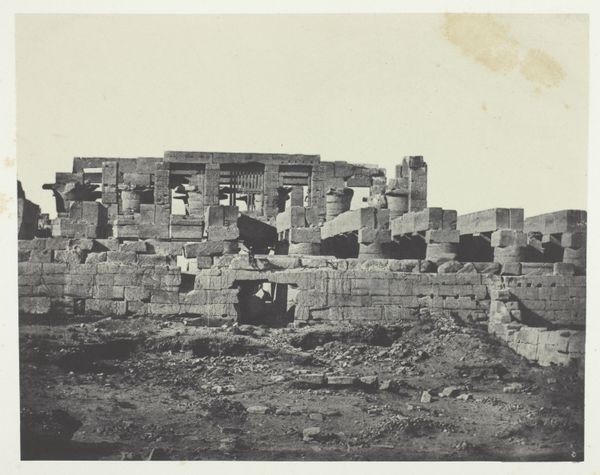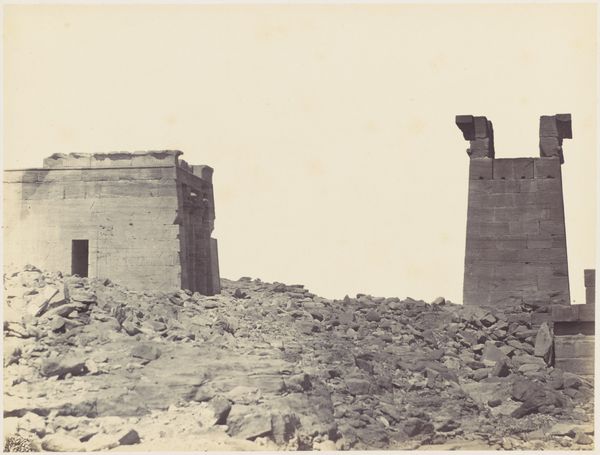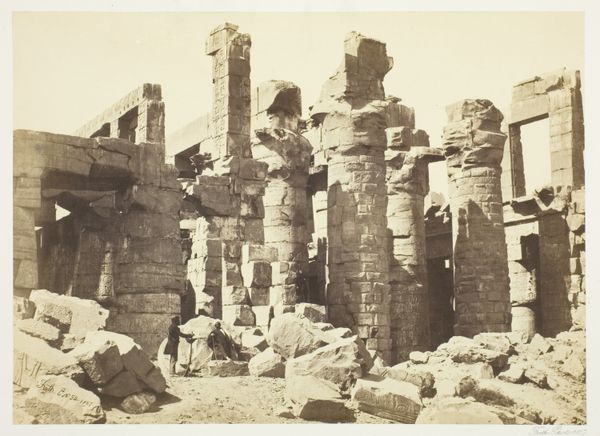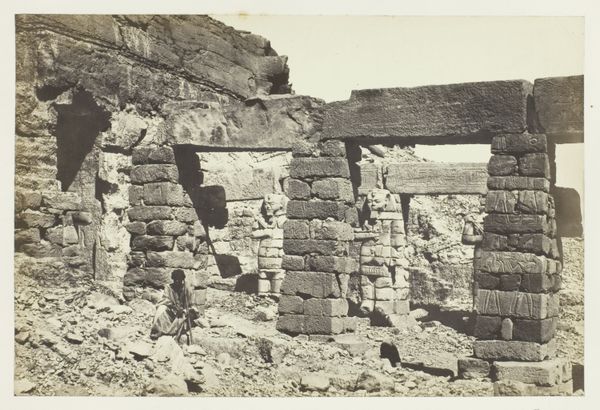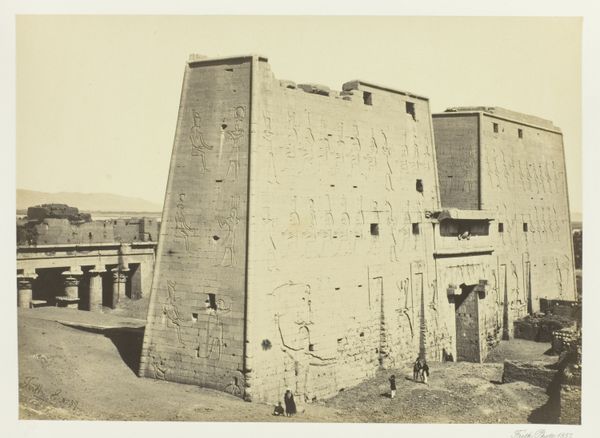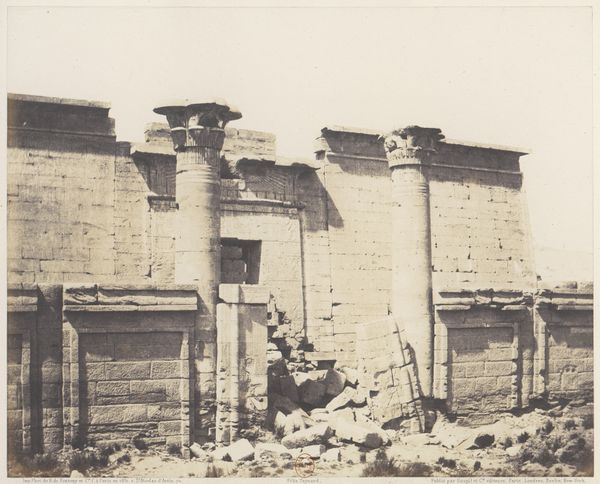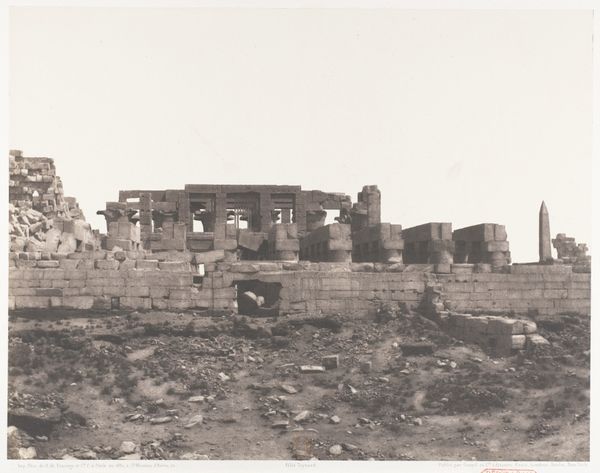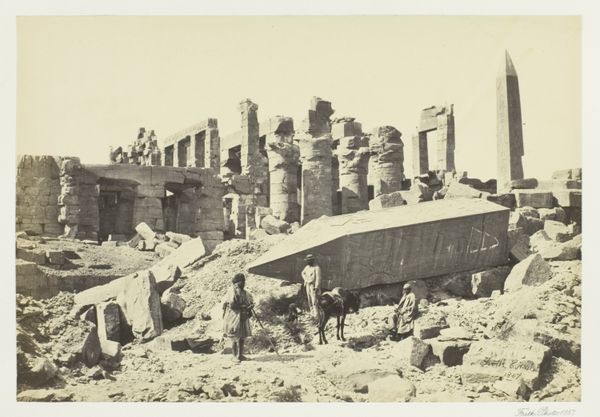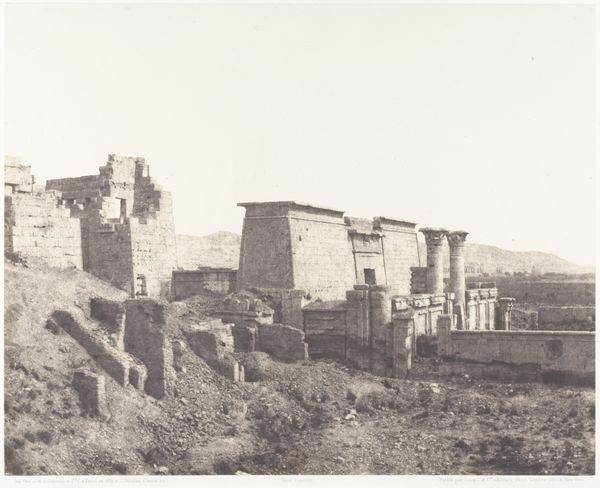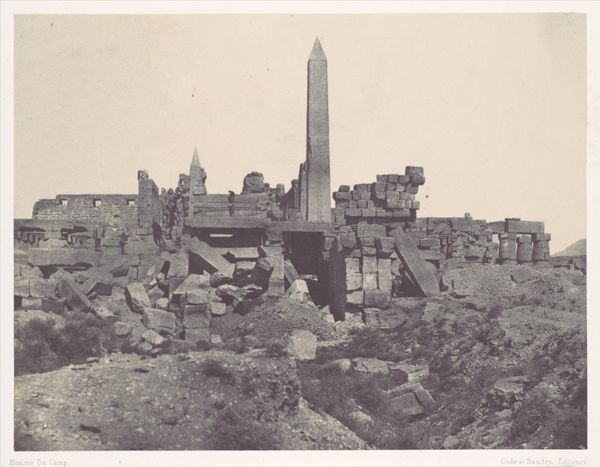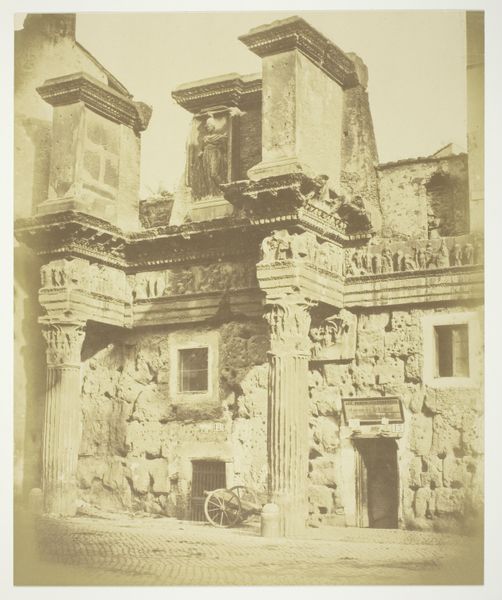
print, photography
#
16_19th-century
# print
#
landscape
#
ancient-egyptian-art
#
photography
#
ancient-mediterranean
Dimensions: 19.1 × 22.6 cm (image/paper); 31.6 × 43.4 cm (mount)
Copyright: Public Domain
Curator: This is Francis Frith's photograph, "The Temple Palace, Medinet-Haboo," taken around 1857. What are your initial thoughts? Editor: It's…imposing, even in ruins. The scale is impressive, but there's also a somber feel to it, this contrast of sunlight against the weathered stones, emphasizing both grandeur and decay. Curator: Frith's work here is particularly fascinating if we consider the burgeoning interest in Egyptology in the 19th century. The very act of photographing this site made it accessible to a wider audience, contributing to its cultural value. Editor: Precisely. How do we reconcile the imperial gaze with the supposed objectivity of photography? Frith's meticulous capturing of these ancient structures simultaneously celebrates and perhaps unwittingly colonizes the Egyptian past. How were the materials acquired and the labor sourced to document this monumental site? Curator: Good question! Frith was a commercial photographer. This print was meant to be sold. Consider that those prints themselves became artifacts, distributed throughout the West, subtly shaping perceptions of Egypt and its legacy. The very materiality of the print – the paper, the inks – speaks to industrial processes and their link to archaeological documentation. Editor: It’s difficult not to read into how photography elevated itself through subjects with history and political meaning, or through the act of claiming space by depiction. The museum then becomes a vital player in conserving history while presenting very curated versions. Curator: I agree. Furthermore, by capturing details of the carvings and architecture, Frith's photograph offered information that supplemented archaeological digs. Editor: Ultimately, this print and photography practices gave birth to new avenues for research, changing approaches towards what society understands is documentation and artistic preservation. Thank you, Francis Frith. Curator: Yes. The conversation keeps on giving, and isn’t history interesting?
Comments
No comments
Be the first to comment and join the conversation on the ultimate creative platform.
